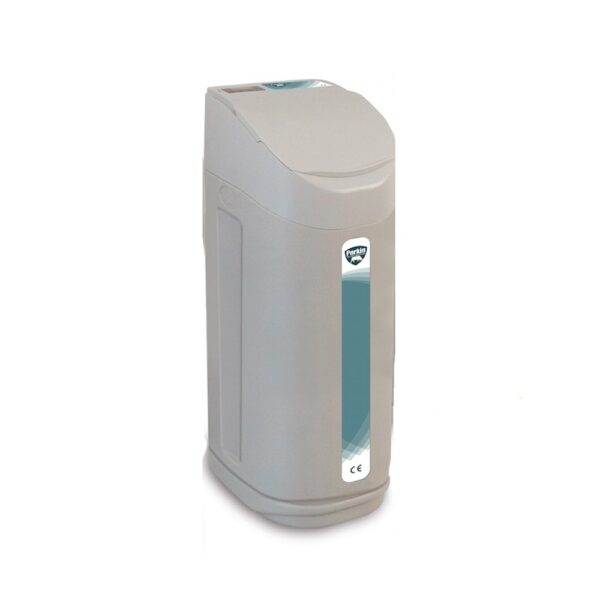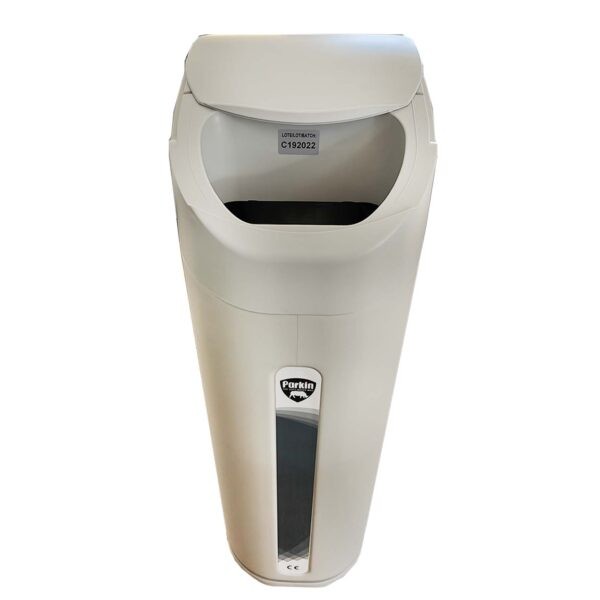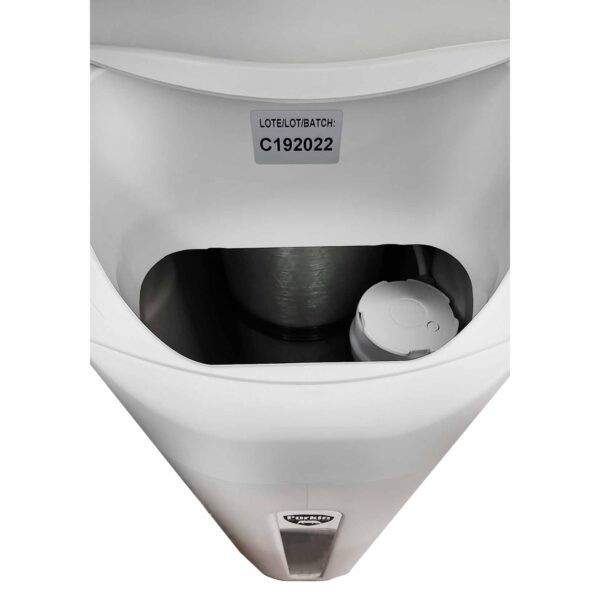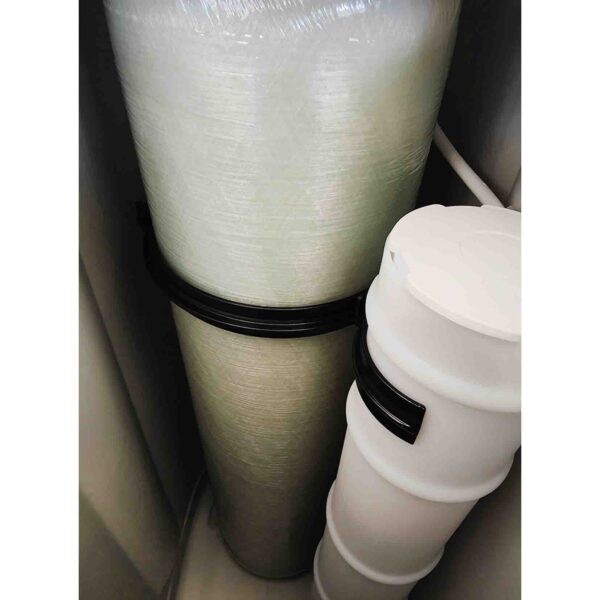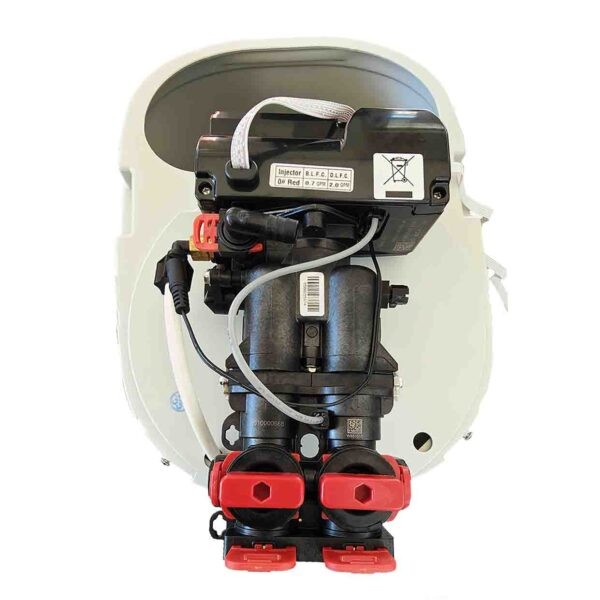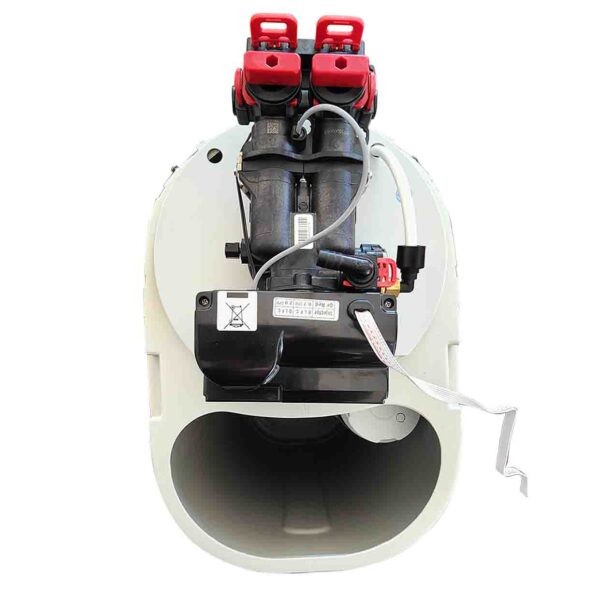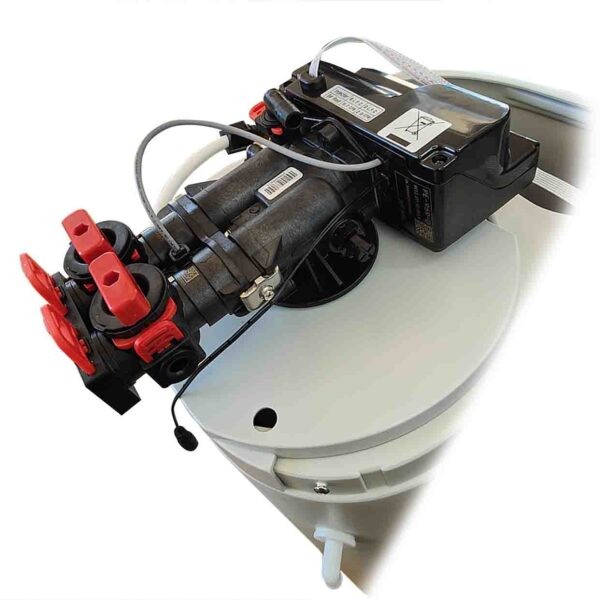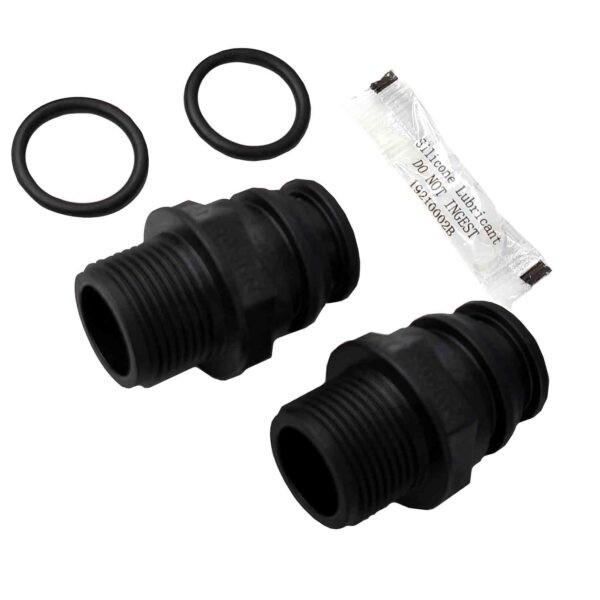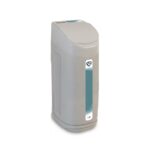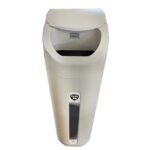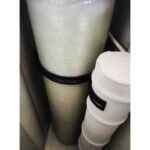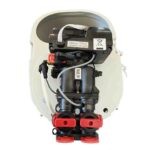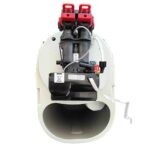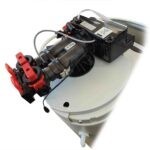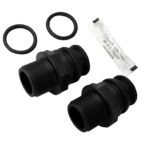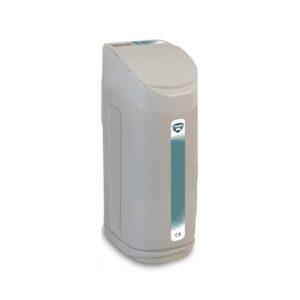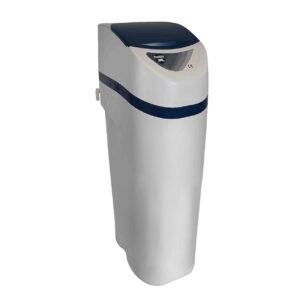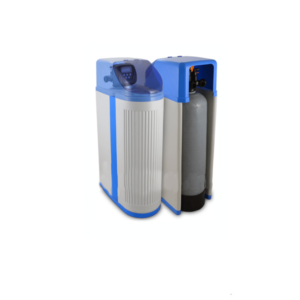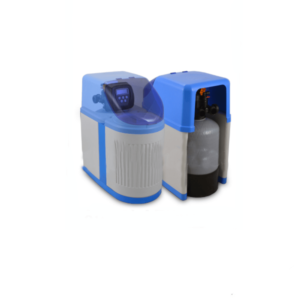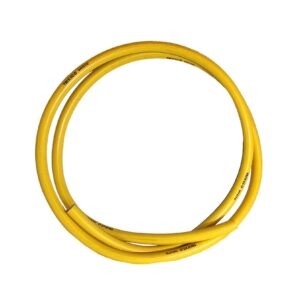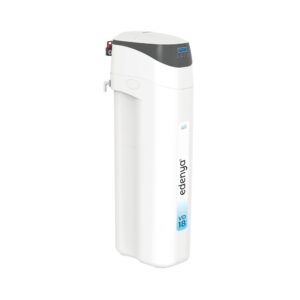Softening of next-generation valve volume and easy programming. Parkin delayed regeneration valve 859D to mixing valve to adjust the hardness out.
Bypass installation included.
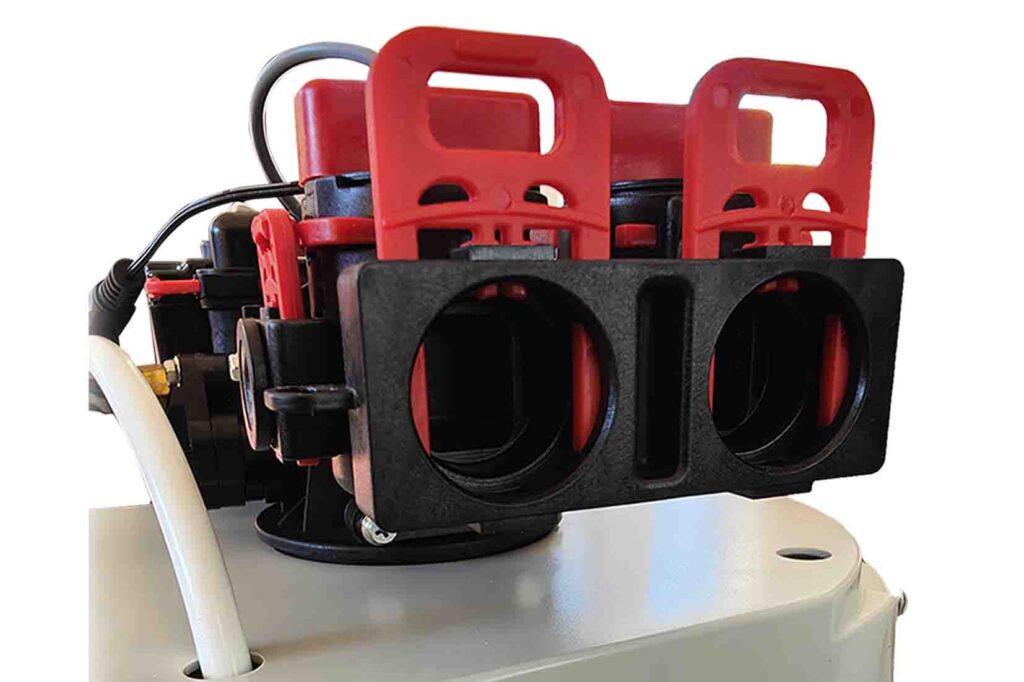
Electronic programmer that allows you to put the device into operation quickly and easily. New generation softeners with volumetric valve. The system consists of a PRFV cylinder and a polyethylene shell. Dayton valve 959D with delayed restrike and mixing valve to adjust the output hardness. By-pass for installation included. Four different regenerations: Timed chronometric – after the programmed number of days, Immediate volumetric – upon passage of a certain amount of water, Delayed volumetric – from the water volume and the programmed time, Mixed volumetric – similar to delayed regeneration, but allows you to program a safety regeneration after the programmed number of days. CE, NSF, D.M. certified product 25, Ministerial Decree 174.
Hardness in water (limestone)
The hardness of the water is expressed in °f (French degrees) and can be measured with drops of Titrant thanks to a special tester, which is important for determining the choice of the type of softener and optimizing sales consumption.
Exchange capacity
The interchange capacity determines the hardness that the softener is able to hold.
Our softeners have different interchange capacities depending on the liters of resin:
slim 7 Liters resin: 22ºHFxm3
thin 12 Liters resin: 49ºHFxm3
12.5 Liters resin: 49ºHFxm3
slim 18 Liters resin: 97ºHFxm3
18 Liters resin: 97ºHFxm3
30 Liters resin: 170ºHFxm3
Output hardness adjustment
Once installed, our softeners produce water at 0°f. It is recommended not to dispense completely softened water in domestic installations. The softeners have an integrated residual hardness regulator that allows you to precisely adjust the hardness of the treated water. To adjust the residual hardness it is necessary to delicately open the MIX valve regulator placed on the head of the softener. For water intended for human consumption, a residual hardness of between 5 and 10ºf for copper pipes and between 8 and 10ºf for iron pipes is recommended. Depending on the programmed output hardness, the softener will tend to produce more softened water and less salt consumption because the input hardness must be compensated with the output value. Adjusting the hardness affects the ability of the softener to produce softened water and the quantity of water and salt for regeneration. This is why it is very important to correctly adjust the machinery to optimize its work and reduce consumption.
Benefits and advantages
Installing a water softener brings significant advantages. Reducing water hardness safeguards the health of home appliances, such as dishwashers and washing machines, with significant energy savings. Furthermore, the reduction of hardness prevents the formation of encrustations in pipes and ducts. Furthermore, softened water provides a greater sense of well-being during the shower thanks to soft and clean skin. Thanks to the softener, it is possible to save money thanks to a reduction in the use of soaps, softeners and chemical products.
For more information you can read our article on the features of a home water softener.
Sodium increase
All softeners to produce softened water through ion exchange in the resins, produce sodium ions in the softened water output. The recommended sodium limit for water intended for human consumption is 200 ppm litre. Depending on the sodium concentration and the hardness of the water, it is possible that the water has a higher sodium concentration than recommended. In cases where this occurs or if it is necessary to follow a low-salt diet, it is advisable to install a domestic reverse osmosis device for drinking water.
Technical features:
– Resin volume: 18 litres
– Consumption of salt during regeneration: 2.16 kg / salt.
– Regeneration water consumption: 90lt.
– Amount of water treated during regeneration: 35°F-2.77m3, 40°F-2.42m3, 45°F-2.15m3, 50°F-1.94m3, 60°F-1.61m3.
– Work flow rate: 0.72 m3 /h
– Maximum flow rate: 1.08m3/h
– Water inlet/outlet: 3/4”M
– Min/max inlet pressure: 2.5 – 8.6 kg/cm
– Power supply: 220 – 12VAC/50Hz
– Working temperature: 4-35C
– Height: 1034mm
– Length: 333mm
– Depth: 505mm
– Plug type C
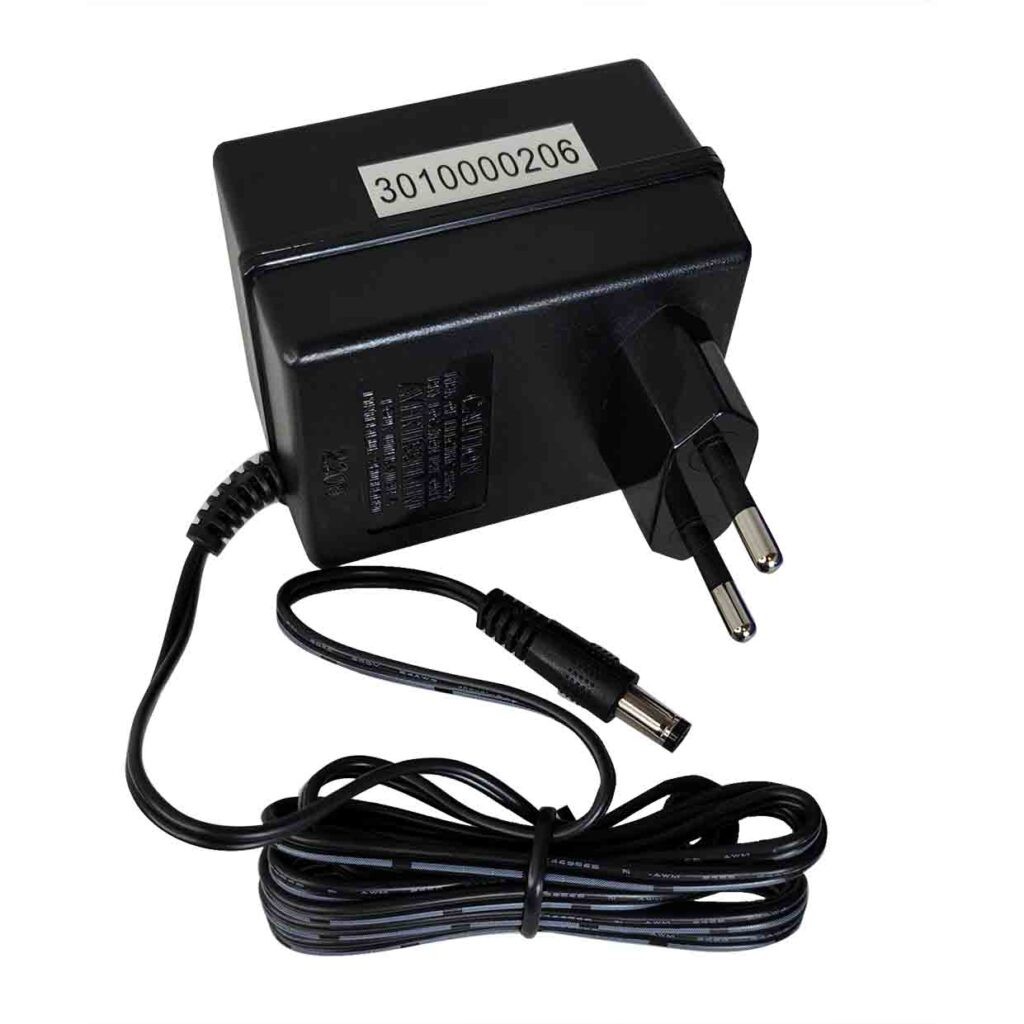
What we advise you to buy with the softener.
If you are interested in purchasing a water softener for your home, perhaps it could be useful for you to add these useful products to improve its performance and guarantee it a longer life.
Titrant Kit
The titrant kit is a quick tester for measuring water hardness. It is a very useful tool for knowing what the water hardness is before the softener and after the softener. The tester can be useful for regulating the hardness output from the softener and for monitoring the correct functioning of your appliance.
Chlorine producer
The chlorine producer is a system that allows automatic sanitization at each regeneration. Thanks to an electrode, the system is able to act directly on the brine (Na+CL-) releasing the chlorine which will sanitize the resins. It is a very useful tool to ensure greater autonomy for the softener.
Sanitizer for resins
The resin sanitizer is an excellent alternative solution to the automatic chlorine maker. In this case the sanitization takes place by inserting the granular sanitizer into the brine well. The ratio to follow is 1 g. per l of resin from your softener. Once added, during the regeneration phase the sanitizer will act on the resins, purifying them and improving their softening capacity.
Vessel container 3 pieces 10″ in/out 1″
The transparent container is a filter holder to be installed before the softener. This system is used to protect the softener from any sediments that could affect the correct functioning of your system. Once installed you will be able to protect the water softener and guarantee it a healthier and more peaceful life.
10″ – 50 micron wound wire filter
What is a container without its filter? The 50 micron cartridge is installed inside the container vessel and has the purpose of retaining impurities, sediments, sand and other suspended material. It is a system able to help the softener in its work by improving its performance. Once saturated, the filter must be replaced, on average every 3/4 months depending on the quality of the incoming water.






